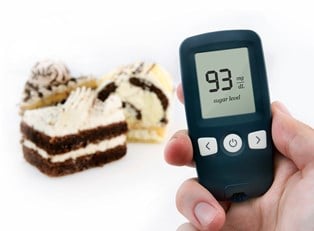Certain elements within the body cause it to function and help maintain it in a homeostatic or stable condition. Underproduction or over-production of any of these elements creates major disturbances in the body. One of such elements is glucose or blood sugar used by the body for energy. Different sites in the body store glucose and transport it to other cells throughout the body via the bloodstream. High blood sugar or hyperglycemia is a condition which occurs when glucose or blood sugar is not being used by the body and builds up in the blood stream.
What is High Blood Sugar?
High blood Sugar causes are many and varied. Blood sugar levels range from 68.8-104.4 mg/dl and higher levels indicate a hyperglycemic state. Causes include severe stress on the body as in long term illnesses such as strokes, heart conditions, accidental trauma and following extensive surgery. Certain medications such as steroids or alcoholic indulgence may cause a temporary rise in blood sugar. Levels usually return to normal as the condition improves or drug is discontinued. A persistently chronic state of high blood sugar is often indicative of Diabetes mellitus. This condition is characterized by the lack of production of insulin, the hormone that assists glucose in being utilized by the body. Glucose then congregates in the blood stream with no outlet.
Indications of High Blood Sugar
As the sugar or glucose level rise within the bloodstream, certain changes takes place in the body which manifest itself into high blood sugar symptoms such as: thirst, dry mouth, frequent urination, blurred vision, nightly visits to the bathroom to urinate, drowsiness, irritation, dry itchy skin, weight loss and fatigue. More serious high blood sugar signs follow, such as dizziness causing stumbling upon standing, increased drowsiness, increased irritability, mental dulling and confusion, rapid weight loss and shortness of breath. Disregarding initial symptoms can lead very quickly to a condition termed diabetic ketoacidosis. This occurs when the body unable to take up sugar for energy, begins to compensate by breaking down the fat stores and using them for fuel. The end products of fat are ketones which join the glucose in the blood stream for a massive build up. This places the body in a toxic state which the brain cannot handle, and coma is the result.
Treatment for High Blood Sugar
The goal for high blood sugar treatment is to maintain blood sugar levels within the normal threshold, which is between 68. 8 - 104.4 mg/dl. Once high blood sugar is present or if diabetes mellitus is diagnosed, immediate steps are necessary to bring the blood sugar levels back to normalcy. Treatments will include the following either separately or combined for the best results:
- Limit Sugar Intake
A build up of sugar exists in the blood stream and storage places, additional sugar will worsen the condition. - Diet
A healthy diet low in fat, rich in protein such as lean meat and legumes (beans and peas), and stringent in sugar consumption often keeps blood sugar levels at healthy levels. - Daily Exercises
Burn off sugar to reduce high levels in the blood stream. - Medication
Taking medications as prescribed by a physician can also help to keep blood sugar levels in check.
Finally, hyperglycemia treatment includes medications to decrease glucose absorption, decrease glucose production, and increase the cell's sensitivity to insulin. Most physicians' office will have high blood sugar information available for patients. These are usually very thorough and will answer most of your questions. Always discuss any thoughts or fears you may have concerning your condition with your physician at each visit.




